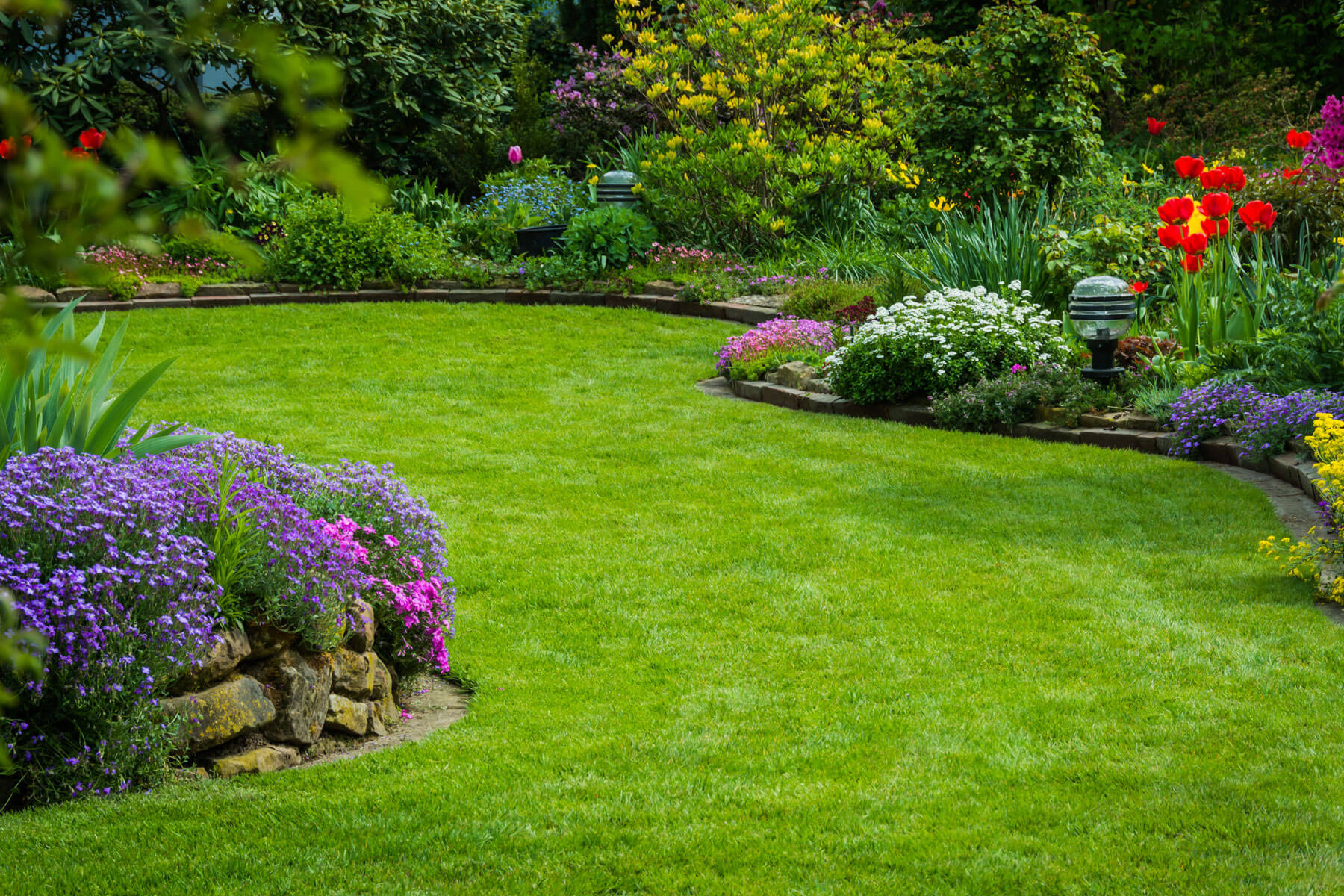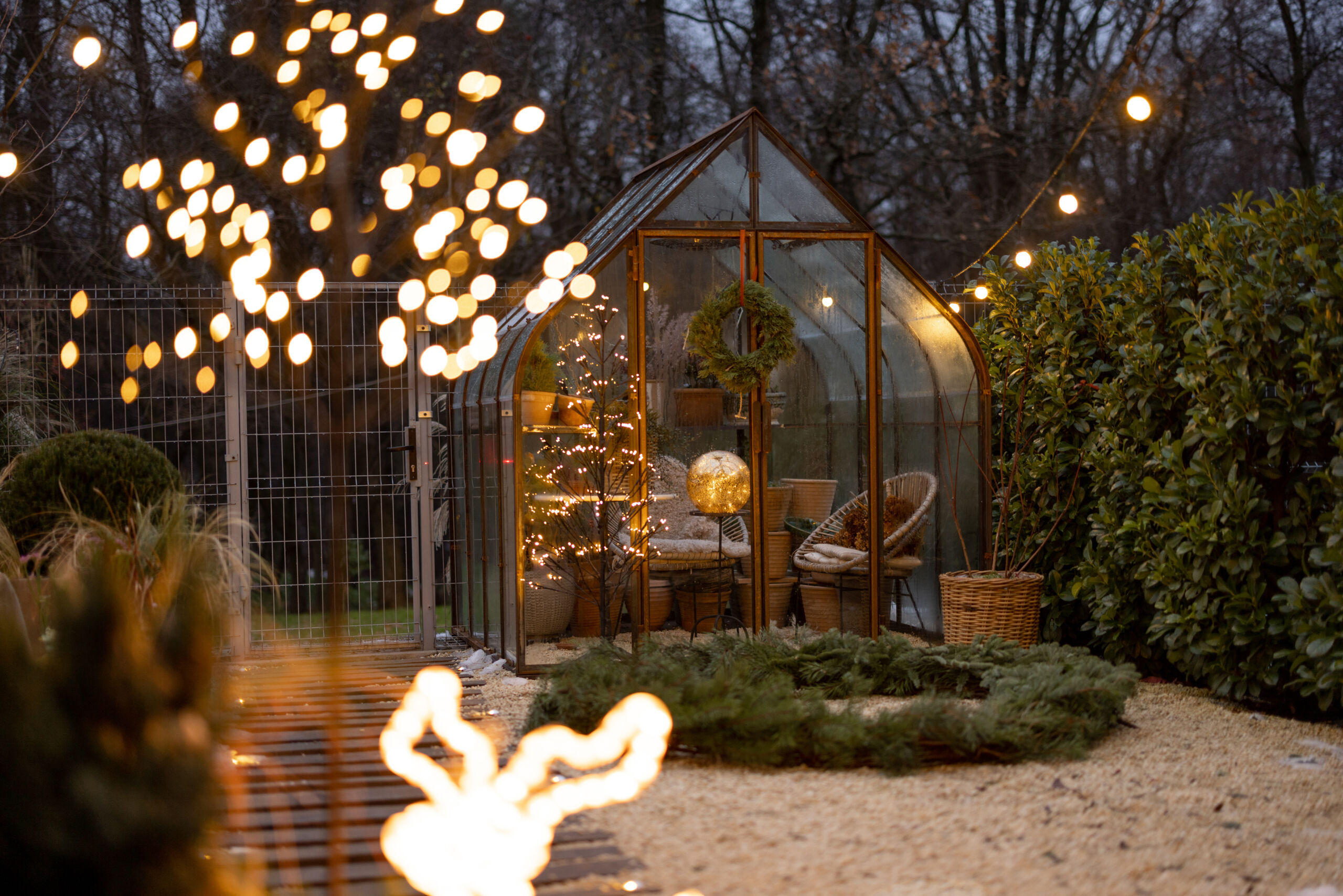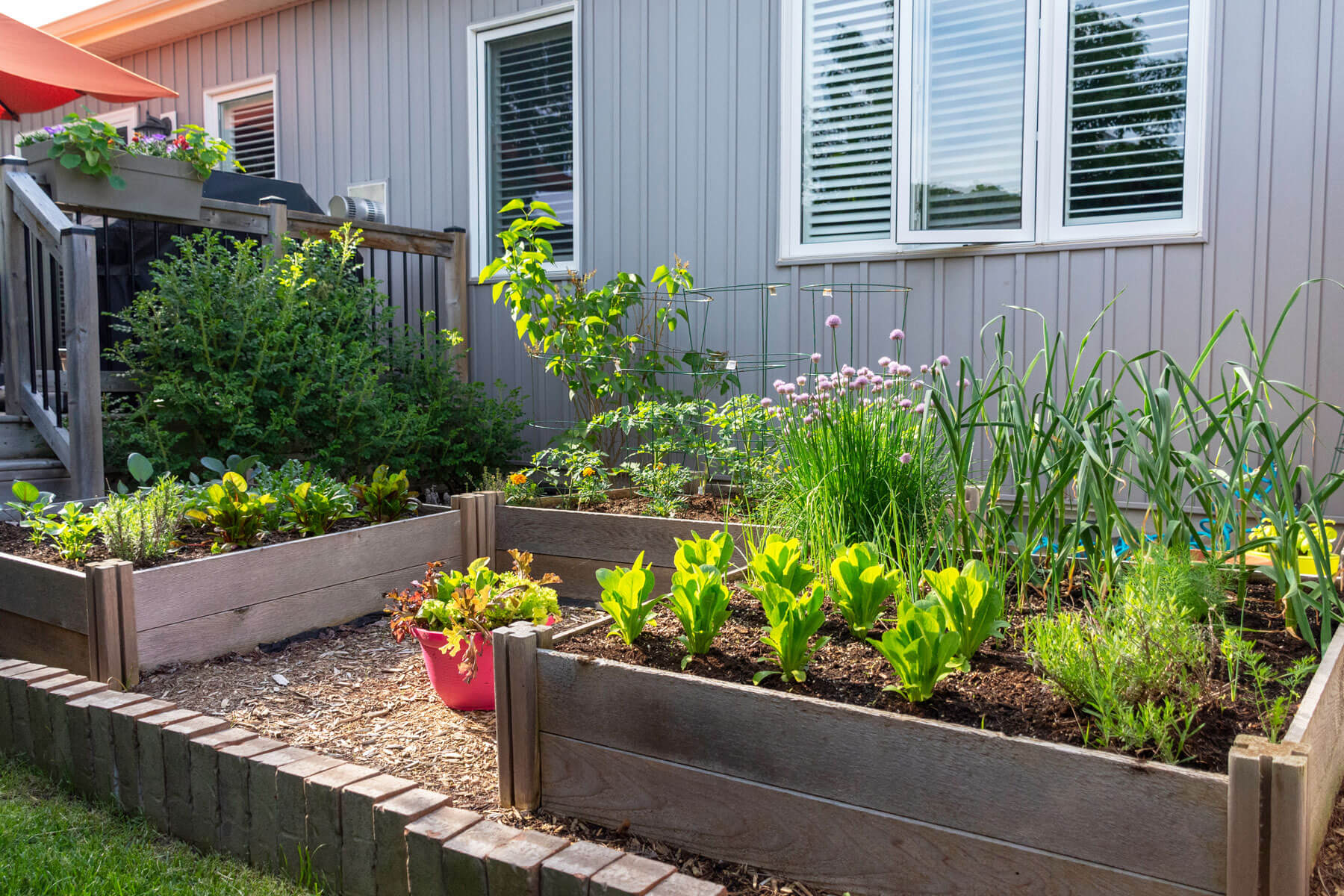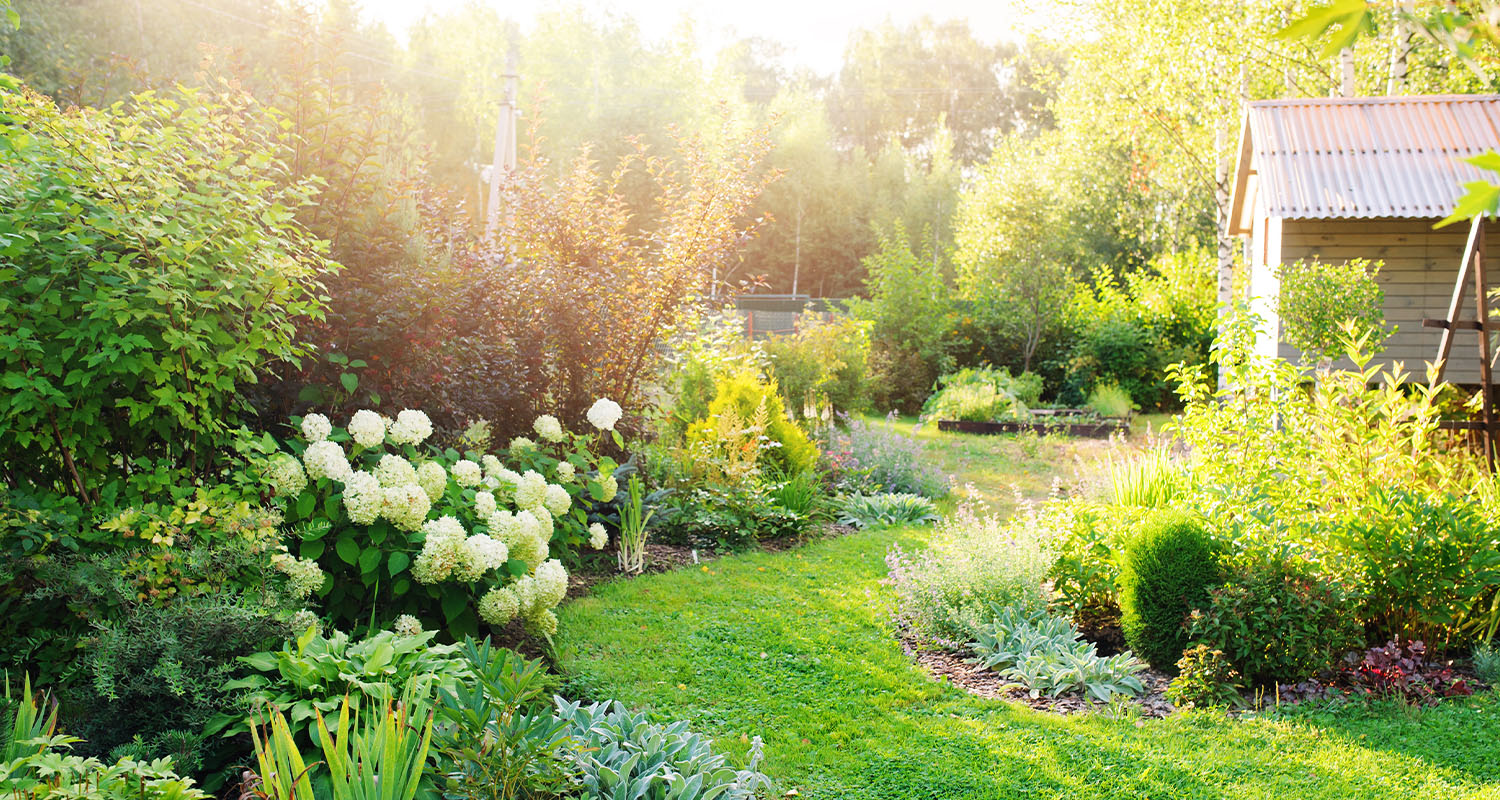Ever looked at a garden that just seems to ‘pop’? That’s the magic of landscape layering at work. It’s like a symphony in greenery, where each plant plays its part to create a harmonious whole.
This technique isn’t just about plopping plants in the soil; it’s about planning and positioning them to create depth, interest, and movement. In Ottawa, where our gardens endure everything from sweltering summers to snowy winters, layering isn’t just beautiful; it’s smart gardening.
It allows for a vibrant display that transitions gracefully with the seasons, and it’s practical, offering protection for your plants from our notorious climate swings.
Understanding the Basics of Layering
So, how do you build these layers? It’s all about understanding your garden’s vertical space. Imagine your garden as a cake with several tiers, each with its own flavor and texture. The tallest layer is your canopy, filled with trees that reach for the sky.
Below that, you have the understory with smaller trees and tall shrubs. Next comes your shrub layer, filled with medium-sized plants. After that, it’s your herbaceous perennials, providing a splash of colour. And finally, the ground cover, hugging the earth and filling in the gaps.
When assessing your own space, start by taking stock of what you have. Look at the heights, the textures, the blooming times, and even the leaf shapes.
Consider your garden’s existing bones — maybe a majestic maple or a stout shrub. These will be the framework on which you’ll build your layered masterpiece. From there, it’s about filling in the blanks and planning new additions that complement what’s already thriving.
Remember, the goal is to create a garden that’s not just a pleasure to look at but also a place that feels alive, with each layer providing its own unique contribution to the whole scene.
Planning for the Thaw: Snow and Water Management
When you’re layering your garden in Ottawa, you have to play a bit of a long game, especially when it comes to our impressive snowfall.
Those beautiful layers of greenery will be layers of white in the winter, and how they melt away in the spring is crucial. It’s all about water management. You want to ensure that when the snow says its goodbyes, it doesn’t leave you with a soggy mess or, worse, a flooded basement.
Strategic layering can help guide that melt-water away from your home. Planting thirsty shrubs and perennials on a gentle slope can direct the flow away from your foundations, while deep-rooted plants can help absorb excess moisture.
Think about those snow drifts and where they accumulate in your yard.
That’s where your water will be come Spring, and that’s where you’ll need to focus your layering strategy. It’s not just about the plants, though; consider incorporating elements like rain gardens or gravel paths that can double as drainage channels.
These can be both functional and attractive, blending seamlessly into your garden’s design while preventing any unintended lakes from springing up where you least expect them.
Selecting Plants for Your Climate Zone
Choosing the right plants for Ottawa’s climate can be a bit like picking a wardrobe for our four distinct seasons. You need variety, resilience, and a bit of flair.
For a layered garden that thrives year-round, focus on plants that are not only cold-hardy but can also withstand the weight of snow. Evergreens are great for adding color and structure in the winter, while deciduous shrubs and trees create a showy display of fall colors before dropping their leaves.
When layering, consider the bloom times of perennials to ensure you have waves of color throughout the growing season. Spring bulbs followed by summer-blooming flowers and autumn-flowering plants will keep your garden in a constant state of renewal. Don’t forget about texture and movement, either.
Grasses that can sway in the breeze add a dynamic element to your garden, while plants with interesting bark or winter berries bring visual warmth even on the coldest days.
As you select your plants, remember that the most successful gardens are the ones that look great but also work well with the local environment. This means choosing plants that are suited to the soil conditions, sunlight, and moisture levels of your particular slice of Ottawa.
With these considerations in mind, your layered garden will not only be a feast for the eyes but will also be a testament to thoughtful, climate-conscious gardening.
Designing with Height: Trees and Shrubs
Elevating your garden’s appeal literally starts with the tallest elements: trees and shrubs. These are the pillars of your garden, offering height, structure, and year-round interest.
In the layering game, they’re your MVPs. Trees like the sturdy oak or elegant birch stand tall, offering shade in summer and stark beauty in winter. Shrubs like dogwoods, with their fiery winter stems, or the classic evergreen boxwoods, keep the garden from ever looking bare.
When picking out these natural giants for your Ottawa garden, think about how they’ll interact with the rest of your landscape throughout the seasons.
Will the maple’s fall crimson complement the autumn perennials? How will the evergreens look with a backdrop of fresh snow? It’s about creating a tapestry that’s as dynamic in the chill of January as it is in the warmth of July.
Mid-Level Magic: Perennials and Grasses
Below the trees and shrubs lies the bustling mid-section of your garden. Here’s where perennials and grasses come into play, bridging the gap between the upper and lower realms. These plants add a burst of life and color. They’re the rhythm section of our garden band, providing a consistent beat of blooms and foliage.
In Ottawa’s diverse climate, perennials like coneflowers and daylilies offer hardiness and a recurring show year after year.
Grasses like miscanthus add texture and movement, their plumes dancing in the winter winds. They’re also the first to peek out from the melting snow, a reassuring sign that spring is on its way.
Ground-Level and Underplanting Strategies
Now, let’s talk about the finale of our layering ensemble: the ground level. This layer is all about ground cover plants and underplanting. They fill in the gaps, weave between their taller counterparts, and essentially tie the whole scene together.
Plants like creeping thyme and vinca with their dense matting, prevent weeds and erosion, especially crucial during Ottawa’s spring thaws.
Ground covers are the unsung heroes that cap off the layered look, ensuring that every inch of your garden is accounted for and adding to the lushness. They’re also practical, holding the soil in place when all that snow melts and the world turns muddy.
Maintaining Your Multi-Level Landscape
The final note in our garden symphony is maintenance. Keeping your layered landscape healthy and vibrant in Ottawa’s climate means regular tune-ups.
Pruning, mulching, and dividing perennials are all part of the routine. It’s about protecting your investment and ensuring that each layer performs at its best.
And then there’s winter prep. Wrapping delicate shrubs, protecting young trees, and giving one last thorough watering before the freeze sets in will help your garden emerge in spring ready for a new season of growth.
Annual assessments will let you adjust your layers, perhaps adding a new character to the mix or enhancing the existing ones.
In the end, a layered garden is a living thing. It grows and changes, and with a little care and creativity, it can be an ever-evolving source of beauty for your home. Whether you’re watching the snow gently rest on the outstretched branches of a pine or the first crocuses breaking through the thawing earth, your layered Ottawa garden can offer a year-round performance that’s as practical as it is enchanting.
Reach out to us to get started on designing your new multi-level landscaping project!






